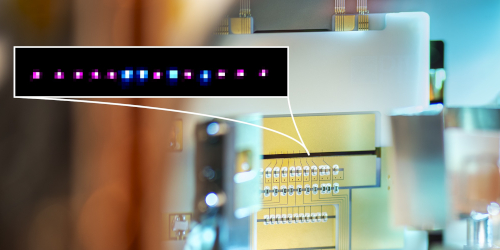Building a Scalable Ion Clock with a Coulomb Crystal
Improving the precision of optical clocks depends on reducing two types of uncertainty: statistical and systematic. Typically, devices that minimize one type of uncertainty pay for it with an increase in the other. Nimrod Hausser and Jonas Keller at the National Metrology Institute (PTB) in Germany and colleagues have now demonstrated an optical clock that promises excellent performance in both respects [1]. The researchers say that their device could eventually be used to more precisely define the second.
An optical clock measures time on the basis of the frequency of an atomic transition called a clock transition. In devices based on optically trapped neutral atoms, the transition frequency is affected by the trapping laser fields, which perturb the atoms’ energy levels. This causes systematic uncertainty. Trapped-ion clocks employ electric fields for trapping, which impart a smaller energy-level perturbation, reducing the associated contribution to systematic uncertainty. Whereas thousands of neutral atoms can be trapped at once, ions are typically trapped in small numbers. An ion clock would thus need to operate for more than a week to match the statistical uncertainty that a neutral-atom clock can achieve in less than one hour, says Keller.
In the new device, up to four indium ions and eight ytterbium ions are trapped in a 1D array called a Coulomb crystal. The indium ions are used for their stable clock transition. The ytterbium ions are used to cool the indium ions through Coulomb interaction, as indium atoms can’t be efficiently laser cooled. The device achieves statistical uncertainty on par with that of the best existing ion clocks. But it offers the potential to match that of neutral-atom clocks by scaling up the setup to include many more indium ions, the researchers say.
–Marric Stephens
Marric Stephens is a Corresponding Editor for Physics Magazine based in Bristol, UK.
References
- H. N. Hausser et al., “115In+-172Yb+ Coulomb crystal clock with 2.5 × 10−18 systematic uncertainty,” Phys. Rev. Lett. 134, 023201 (2025).




